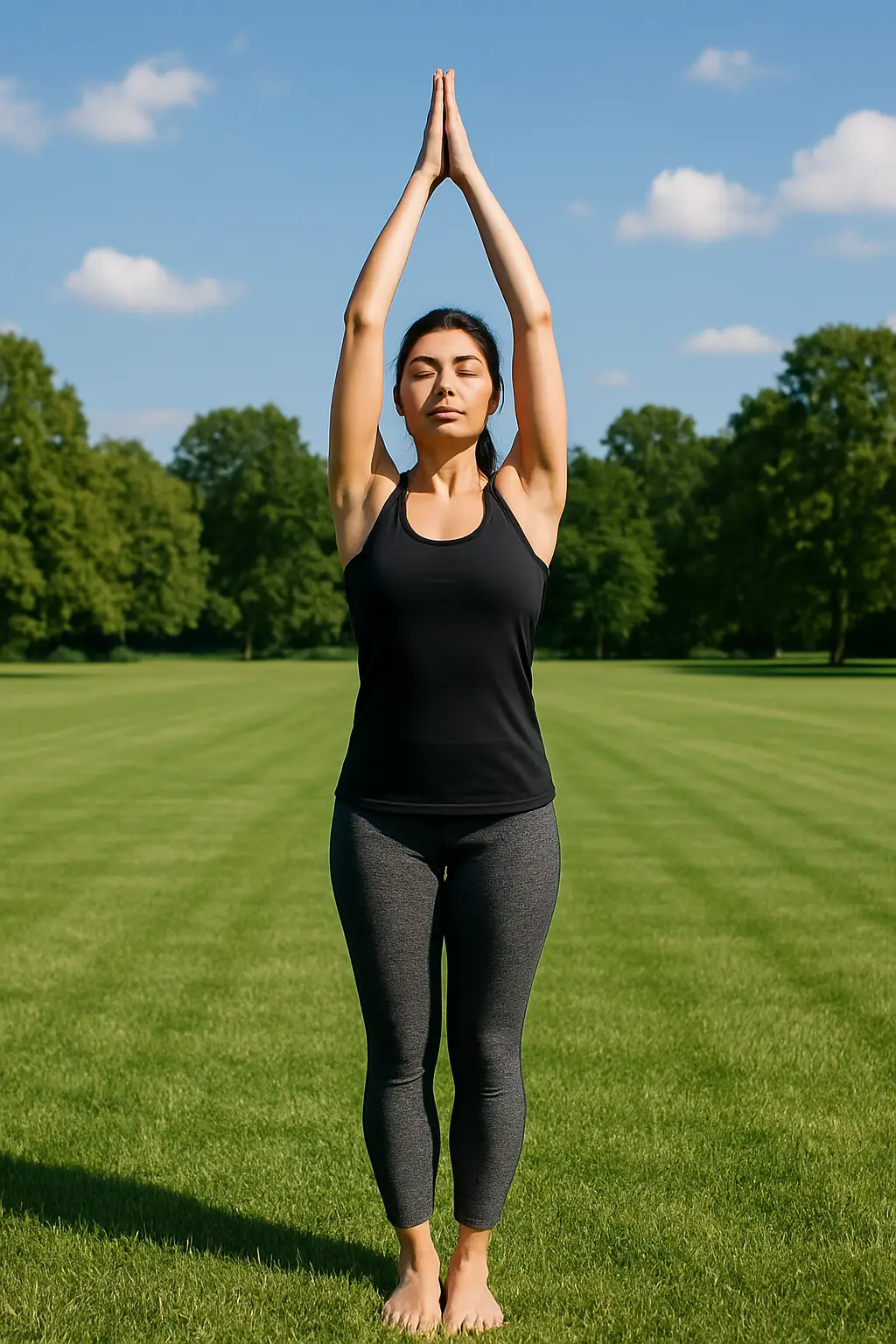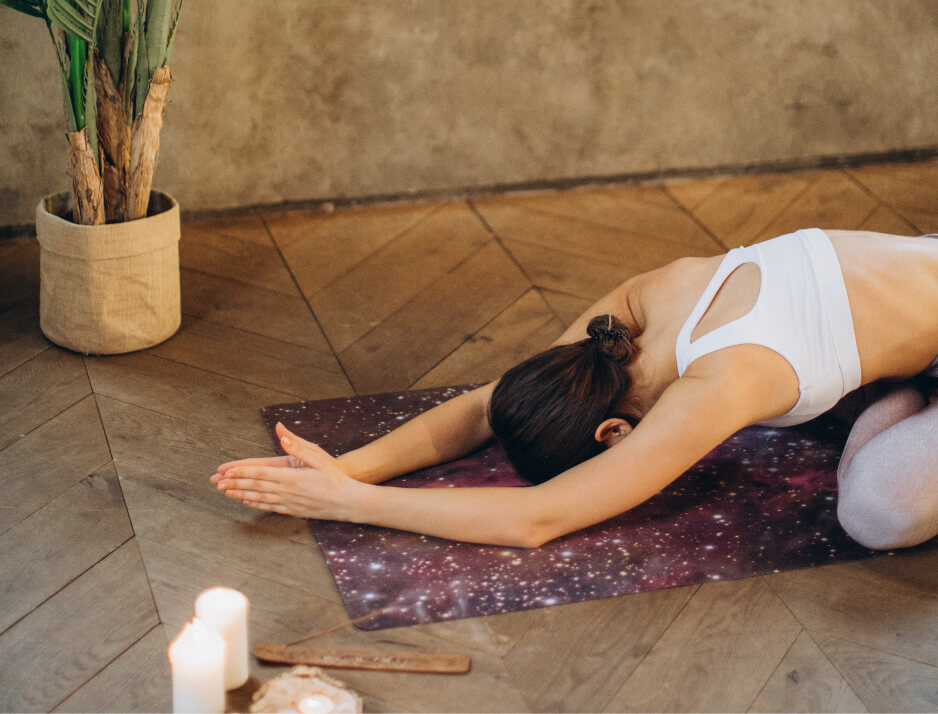At its core, Mountain Pose teaches you how to stand with intention. It’s not about rigidity but rather an active engagement of your muscles to create a tall, balanced, and aligned posture. From the soles of your feet to the crown of your head, every part of your body plays a role in this seemingly simple yet profoundly effective pose.
Finding Your Mountain
To begin, stand with your feet hip-width apart. You can also bring your big toes to touch and leave a slight space between your heels if that feels more stable. Distribute your weight evenly across the soles of your feet. Feel the connection with the earth beneath you. Engage your leg muscles by gently lifting your kneecaps – not locking them, but actively drawing them upwards. This engagement provides stability and prevents hyperextension.
Next, draw your tailbone down slightly and engage your lower abdominal muscles. This subtle action helps to lengthen your lower back and create a neutral pelvic alignment. Lift your chest and broaden across your collarbones. Allow your shoulders to relax down your back, away from your ears. Your arms should hang naturally by your sides, with your palms facing forward. This external rotation of the arms helps to open the chest further.
Finally, lengthen the back of your neck and allow your chin to be parallel to the floor. Imagine a gentle thread pulling the crown of your head towards the sky, creating a sense of elongation through your spine. Soften your gaze and breathe deeply and evenly.
The Benefits of Grounded Strength
The benefits of consistently practicing Mountain Pose extend far beyond improved posture. It actively strengthens your thighs, knees, and ankles as you learn to engage these muscles for stability. The gentle engagement of your core muscles helps to firm your abdomen and buttocks. For those who experience mild sciatica, Tadasana can offer relief by promoting proper spinal alignment and reducing pressure on the sciatic nerve.
Beyond the physical benefits, Mountain Pose cultivates a sense of grounding and presence. By consciously connecting with your body and the earth, you can reduce mental chatter and cultivate a feeling of inner stillness. This mindful awareness translates into other areas of your life, helping you to feel more centered and balanced both on and off the mat.
Integrating Tadasana into Your Practice
Mountain Pose serves as the starting point for many standing poses, including Warrior poses, Triangle Pose, and Tree Pose. Understanding the proper alignment in Tadasana will help you to find stability and balance in these more challenging postures. It’s also a valuable pose to return to between more dynamic sequences, allowing you to reconnect with your breath and re-establish your foundation.
Even a few moments spent in mindful Mountain Pose throughout your day can be beneficial. Whether you’re waiting in line, taking a break from work, or simply pausing, bringing awareness to your posture and engaging the principles of Tadasana can help to improve your overall well-being.
In conclusion, don’t underestimate the power of Mountain Pose. It’s more than just standing; it’s an active, mindful posture that builds strength, improves alignment, and cultivates a sense of grounding. By mastering Tadasana, you lay a solid foundation for a fulfilling and sustainable yoga practice. Embrace the simplicity and the profound benefits of this essential pose.



